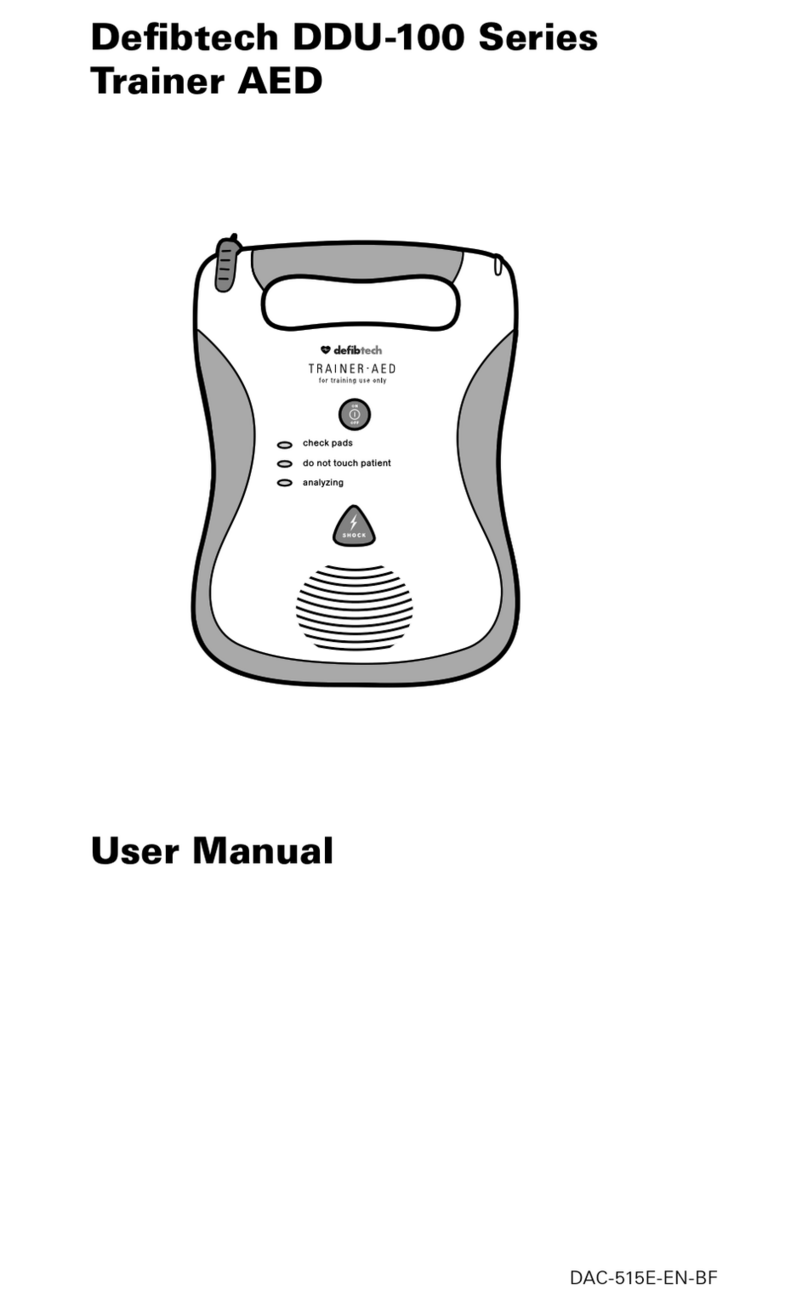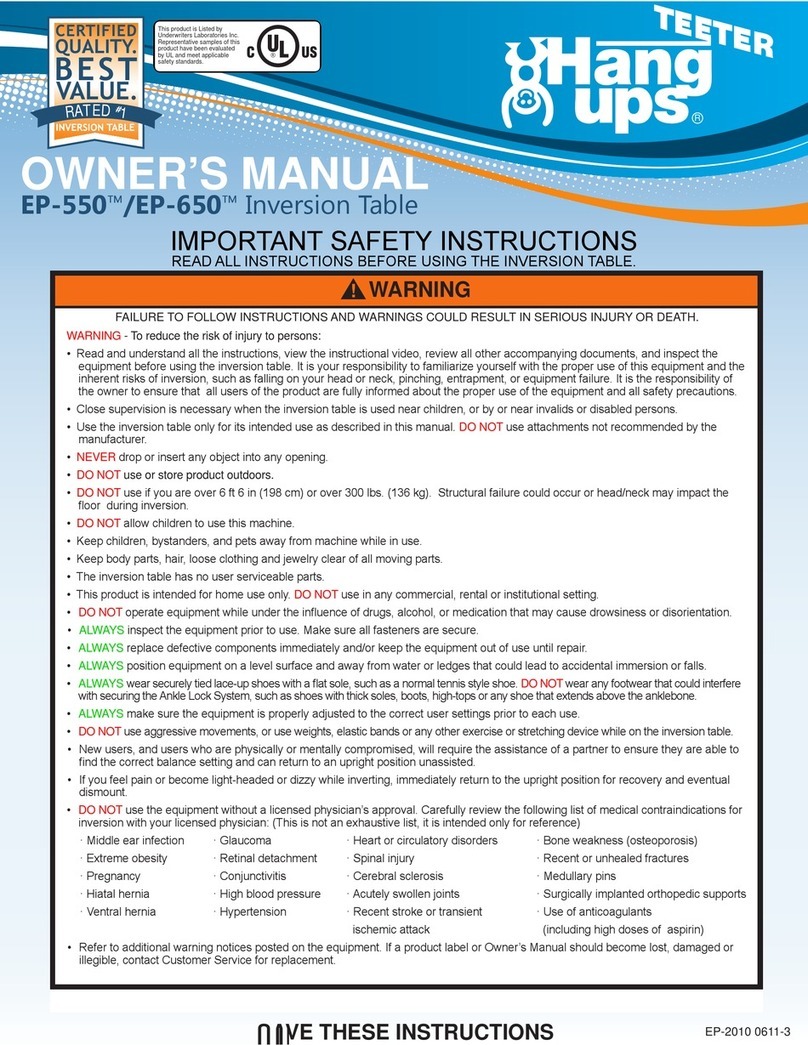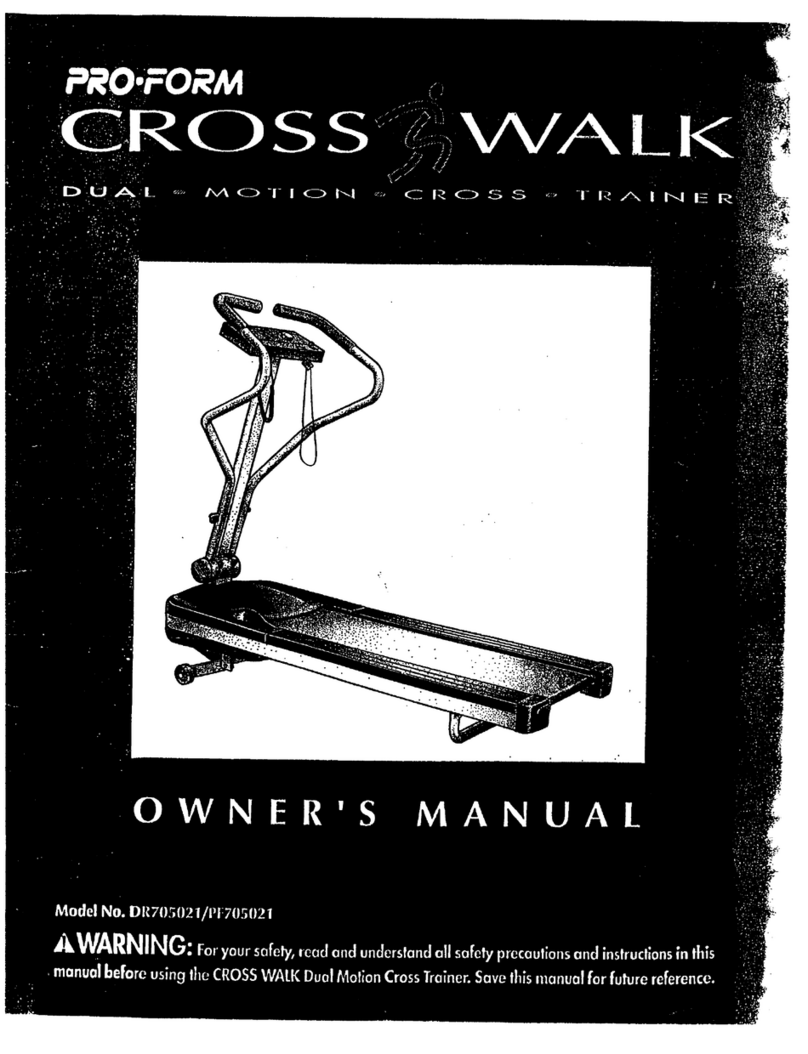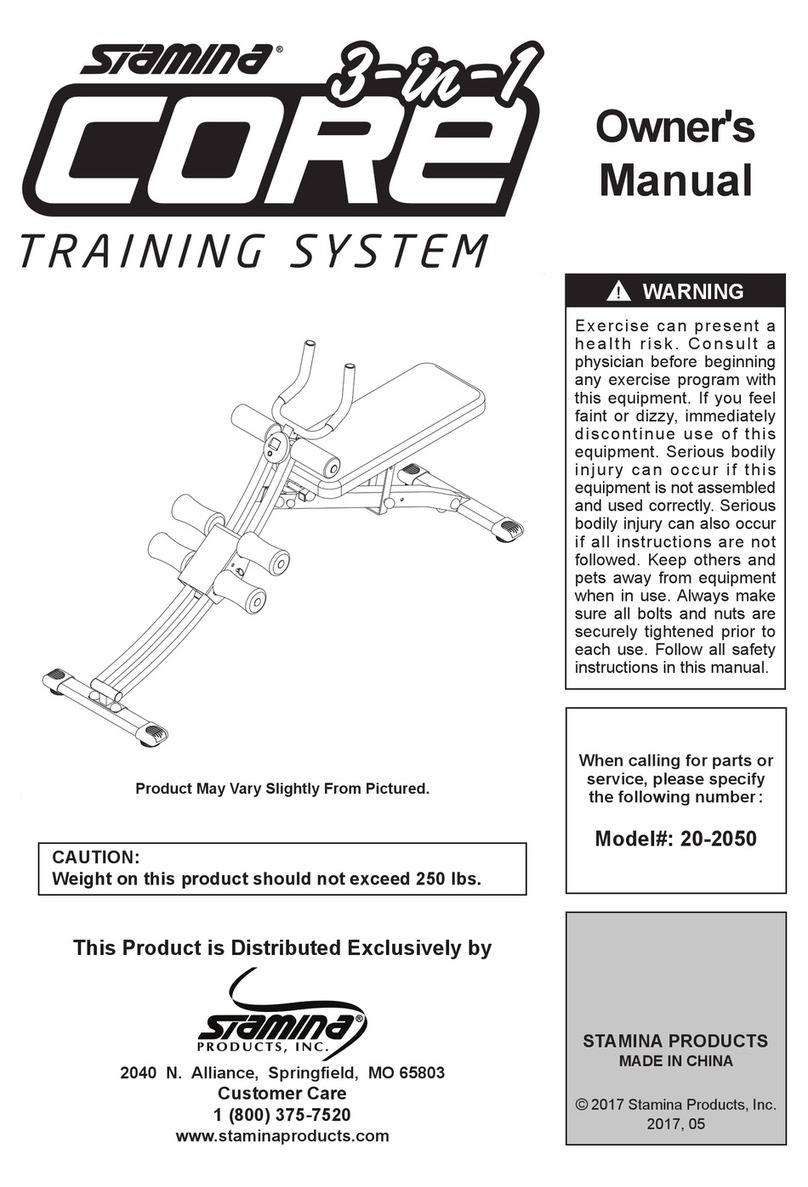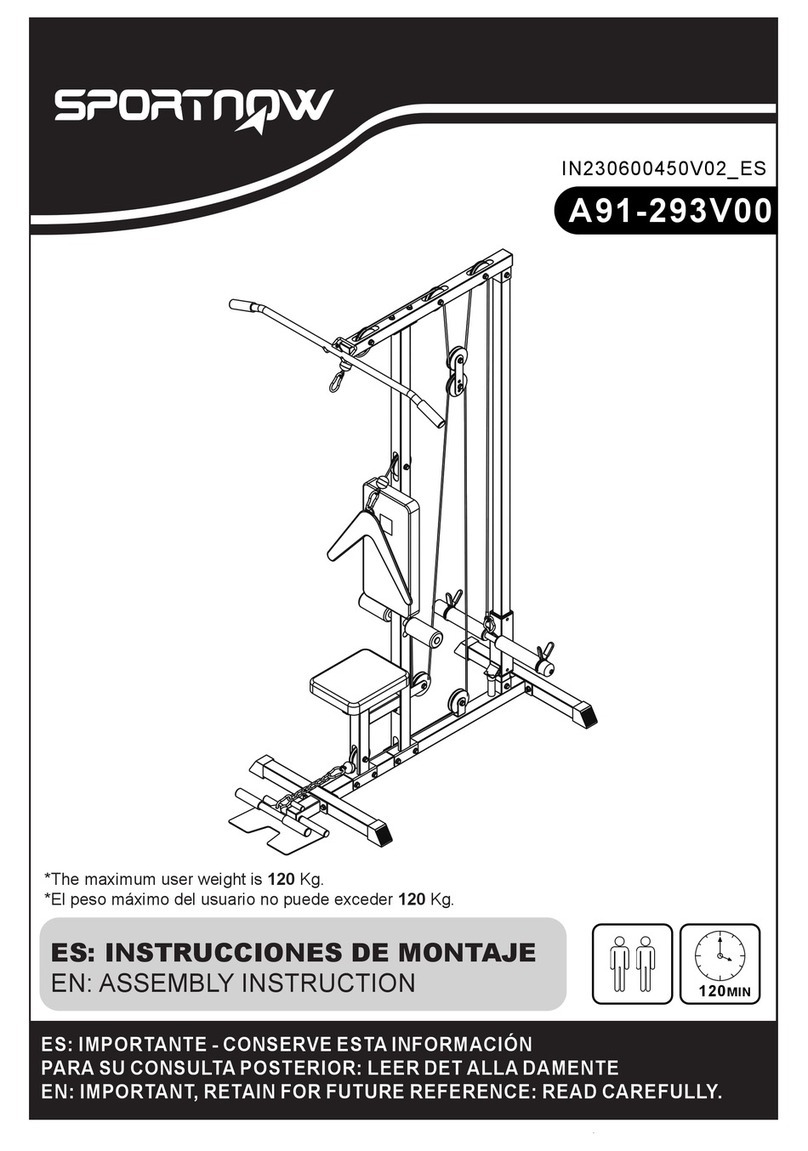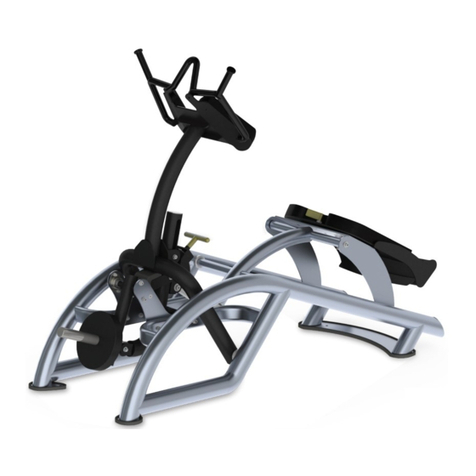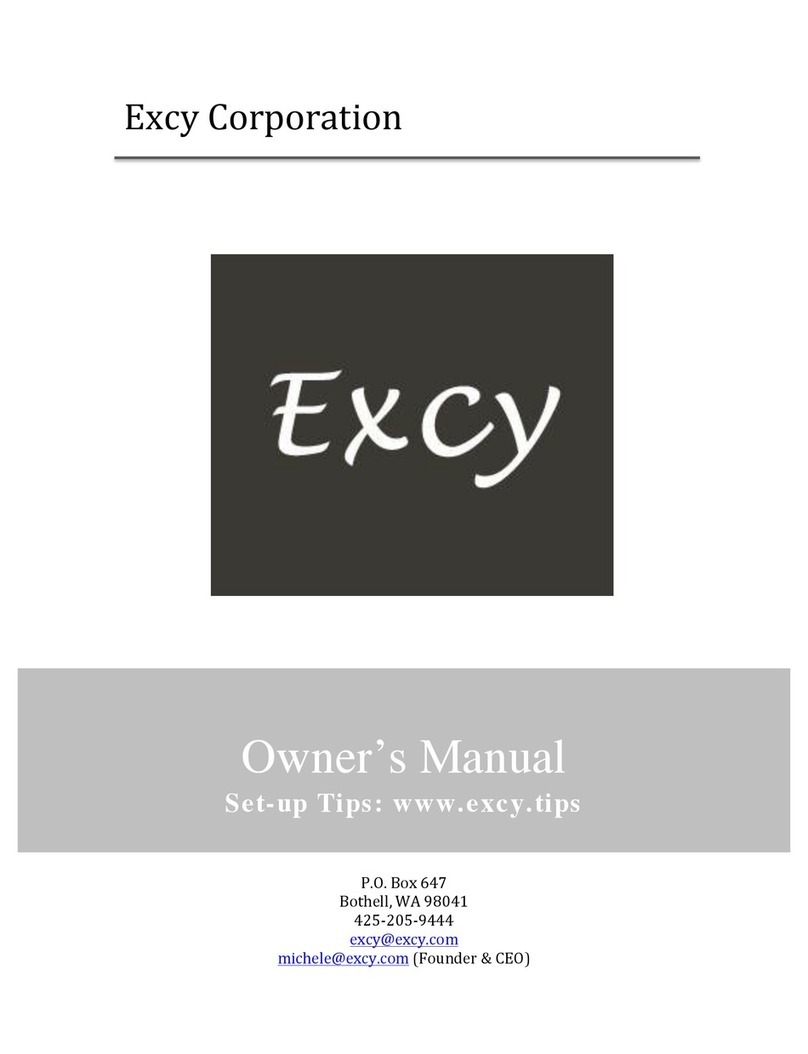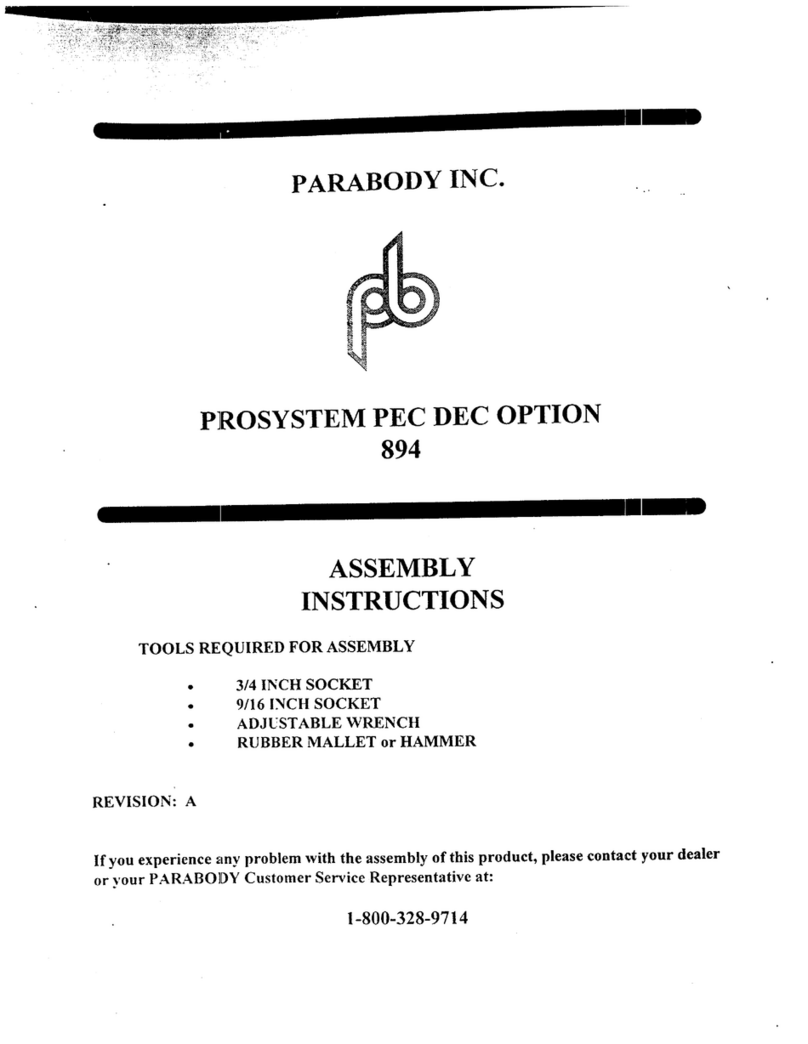Defibtech DDU-2000 Series User manual

DAC-U2535EN-BD
Defibtech DDU-2000 Series
Trainer
User Manual
ELECTRONIC
DISTRIBUTION

DAC-U2535EN-BD
2
Notices
Defibtech, L.L.C. shall not be liable for errors contained herein or for incidental or
consequential damages in connection with the furnishing, performance, or use of this
material.
Information in this document is subject to change without notice. Names and data
used in the examples are fictitious unless otherwise noted.
Limited Warranty
The Defibtech “Limited Warranty” is the sole and exclusive warranty for Defibtech
defibrillators and associated accessories. For warranty purposes, the Trainer and all
of its accessories are classified as AED accessories. Refer to the Original End User’s
Limited Warranty for AEDs available at www.defibtech.com for details.
Copyright
Copyright © 2019 Defibtech, L.L.C.
All rights reserved. No part of this documentation may be reproduced or transmitted
in any form by any means without the express written consent of Defibtech, L.L.C.
Issued: 2019-03-18

DAC-U2535EN-BD
3
Contents
1 Introduction to the Defibtech DDU-2000 Series Trainer .....5
2 Safety Information...............................................................5
2.1 Warnings .................................................................................6
2.2 Cautions ..................................................................................7
3 Trainer Components.............................................................8
3.1 Trainer Unit .............................................................................8
3.2 Training Battery Pack .............................................................8
3.3 Remote Control.......................................................................9
3.4 Training Pads...........................................................................9
4 Accessories ..........................................................................9
5 Training Scenarios..............................................................10
5.1 Available Scenarios ..............................................................10
5.2 The Default Training Scenario .............................................. 11
5.3 Programming the Default Scenario...................................... 11
5.3.1 Programming the Default Scenario Without the Remote Control................11
5.3.2 Programming the Default Scenario With the Remote Control ....................12
6 Display Modes ....................................................................12
7 Remote Control Commands ...............................................13
8 Using the Remote Control with Multiple Trainers .............14
8.1 Assigning Unique Names to Trainers ...................................14
8.2 Removing Unique Names from Trainers...............................14
9 Maintenance and Troubleshooting ....................................15
9.1 Routine Maintenance ............................................................15
9.2 Cleaning ................................................................................15
9.3 Storage..................................................................................16
9.4 Troubleshooting....................................................................16
9.5 Repair ....................................................................................17
9.6 Recycling Information...........................................................17
9.7 Notice to European Union Customers ..................................18

DAC-U2535EN-BD
4
10 Technical Specifications ..................................................19
10.1 General................................................................................19
10.2 Environmental.....................................................................19
10.3 Battery Pack .......................................................................19
10.4 AC Adapter .........................................................................20
11 Electromagnetic Conformity............................................21
11.1 Guidance and Manufacturer’s Declaration ........................21
11.2 Electromagnetic Emissions................................................21
11.3 Electromagnetic Immunity.................................................21
11.4 Regulatory Compliance ......................................................23
12 Glossary of Symbols ....................................................... 24
13 Contacts ...........................................................................26
Contents (continued)
This User Manual provides information and operational instructions
specific to DDU-2000 Series Trainers.
For comprehensive information about DDU-2000 Series rescue AEDs,
please refer to the DDU-2000 Series AED User Manual
at www.defibtech.com.

DAC-U2535EN-BD
5
1 Introduction to the Defibtech DDU-2000 Series
Trainer
The “Trainer” is a dedicated training system that is externally similar to a fully-functional
Defibtech DDU-2000 Series Automated External Defibrillator (AED).*
The main unit has bright red overmolding to clearly distinguish it as a training device.
The training pads and battery for use with the Trainer have red packaging and labels to
distinguish them as being for training use only. TheTrainer and training accessories
cannot be used to defibrillate patients.
A Remote Control is provided with the Trainer which allows the instructor to control
training exercises and functions from a distance.
WARNING
Do not store the Trainer or training accessories with a rescue AED
or rescue accessories. The Trainer and training accessories cannot
provide therapy.
2 Safety Information
This chapter includes a list of warning and caution messages that relate to the Trainer
and its accessories. Many of these messages are repeated elsewhere in this User
Manual and on the Trainer or accessories. The entire list is presented within this chapter
for convenience.
WARNING: Conditions, hazards, or unsafe practices that may result in serious
personal injury or death.
CAUTION: Conditions, hazards, or unsafe practices that may result in minor
personal injury, damage to the Trainer, or loss of data.
* Essential performance.

DAC-U2535EN-BD
6
2.1 Warnings
WARNING
All training instructors must read these instructions for use before
using the Trainer.
WARNING
Do not use in the presence of flammable gases or anesthetics.
WARNING
Only use the provided AC Adapter to charge the Training Battery Pack.
Using other AC adapters may cause unsafe conditions.
WARNING
Do not charge a battery pack which is damaged, discolored or has
leakage. It may cause overheating, explosion or fire.
WARNING
Do not cover up the Trainer when it is in use.
WARNING
If the Trainer, Battery Pack, and/or AC Adapter becomes too hot to
touch or otherwise appears faulty, immediately disconnect the power
cord from the AC outlet, attach a “Do not use” or “To be repaired”
label to the item(s) and contact your local distributor or Defibtech
representative.
WARNING
Do not overcharge the Trainer Battery Pack.
WARNING
Do not store the Trainer or training accessories with a rescue AED or
rescue accessories. The Trainer and training accessories cannot provide
therapy.
WARNING
If the Training Battery Pack is inserted in a DDU-2000 series AED,
the AED cannot be used to perform a rescue. Replacing the Training
Battery Pack with a rescue battery pack will immediately allow the
DDU-2000 Series AED to be used to perform a rescue.

DAC-U2535EN-BD
7
WARNING
Do not store Training Pads and/or a Training Battery Pack with a rescue
AED.
WARNING
Training Pads cannot be used to rescue a patient. If Training Pads are
connected to a DDU-2000 Series AED, the AED will say “Check Pads,”
and the AED will report an error during the next automatic self-test.
WARNING
Do not apply the Training Pads to human skin. Use only with a manikin
or similar materials.
WARNING
Do not sterilize the Trainer or its accessories.
2.2 Cautions
CAUTION
Only use a Defibtech-specified rechargeable battery pack for use with
the Trainer. If an unspecified battery pack or a non-rechargeable battery
is charged, it may cause overheating, explosion, fire or leakage.
CAUTION
Do not disassemble or modify the Trainer and its accessories. Doing
so may cause overheating, fire, electrical shock or injury.
CAUTION
The Trainer is made for indoor use and is not water/dust proof or
resistant. Do not place the Trainer in locations that are extremely hot
or cold, dusty or dirty, very humid or vibrating. If the Trainer is exposed
to any of these conditions, it may cause fire or injury.
CAUTION
Do not drop the Trainer or apply a mechanical shock to it.
CAUTION
Do not store or use the Trainer outside of the specified conditions.
Warnings (continued)

DAC-U2535EN-BD
8
3 Trainer Components
3.1 Trainer Unit
WARNING: The Trainer and training accessories cannot be used to defibrillate patients.
The components included with a new Trainer system are:
1. Trainer (DTR-2000).
2. Rechargeable Training Battery Pack (DTR-2005);
provided with AC Adapter (DTR-2006).
3. Training Pads - 1 adult set (DTR-2001).
4. Remote Control (DTR-400; use is optional).
3.2 Training Battery Pack
The rechargeable Training Battery Pack should be charged using the supplied AC Adapter.
Connect the AC Adapter to the Training Battery Pack by inserting the Adapter’s connector
into the port on the underside of the Battery Pack and then plug the Adapter into an AC
power source. The battery will fully charge in 12-14 hours.
Note: Avoid overcharging for longest battery life – when proper charging procedures are
followed, the Training Battery Pack should have a life of approximately 200 charge/discharge
cycles.
WARNING
Only use the provided AC Adapter to charge the Training Battery Pack.
Using other AC adapters may cause unsafe conditions.
WARNING
If the Training Battery Pack is inserted in a DDU-2000 series AED,
the AED cannot be used to perform a rescue. Replacing the Training
Battery Pack with a rescue battery pack will immediately allow the
DDU-2000 Series AED to be used to perform a rescue.
WARNING
Do not store the Training Battery Pack with a rescue AED.

DAC-U2535EN-BD
9
3.3 Remote Control
The Remote Control requires two AAA batteries (included). Insert the batteries into the
battery compartment in the back of the Remote Control. No other setup of the Remote
Control is required.
3.4 Training Pads
One Training Pads set (pads pouch, pads, and connector cable) is included with the Trainer
system. Additional training pads are available as complete pad sets and as an economical
replacement pads multi-pack. The replacement pads attach (with hook and loop fasteners) to
the reusable connector cable supplied with complete pad sets.
WARNING
Training Pads cannot be used to rescue a patient. If Training Pads are
connected to a DDU-2000 Series AED, the AED will say “Check Pads,”
and the AED will report an error during the next automatic self-test.
WARNING
Do not store the Training Pads with a rescue AED.
WARNING
Do not apply the Training Pads to human skin. Use only with a manikin
or similar materials.
4 Accessories
This chapter describes the accessories that can be used with the DDU-2000 Series Trainer.
To obtain replacement component parts and accessories, contact your authorized distributor
or Defibtech.
1. DTR-2001: Complete adult trainer pad set with connector cable
2. DTR-2051: 5-pack of adult replacement trainer pads
3. DTR-2002: Complete pediatric trainer pad set with connector cable
4. DTR-2052: 5-pack of pediatric replacement trainer pads
5. DTR-2005: Rechargeable training battery pack (charger not included)
6. DTR-2006: Trainer battery charger
7. DTR-400: Trainer remote control (includes two AAA batteries)
8. DAC-2105: Trainer soft carrying case

DAC-U2535EN-BD
10
5 Training Scenarios
5.1 Available Scenarios
Six training scenarios (described below) are available for training exercises, and can be
changed during training as desired.
The following scenarios are available:
1. VF (Ventricular Fibrillation) that converts to a non-shockable rhythm (normal
sinus rhythm) after the 1st shock. This scenario is based on the American
Heart Association training scenario and allows for a quick overview and
demonstration of AED operation.
2. Non-shockable rhythm throughout.
3. Bad pads indication until the pads are disconnected and then re-connected
(simulating replacement of the pads), followed by VF that converts after the
1st shock to a non-shockable rhythm (normal sinus rhythm).
4. VF that converts on the 2nd shock to a non-shockable rhythm (normal sinus
rhythm).
5. Non-converting persistent VF.
6. Pads not applied to the manikin. This scenario is recommended as the Default
Scenario when using the Remote Control. The Trainer will prompt the student
to apply pads to the manikin, and the instructor can then manually select
rhythm simulations (such as NSR and VF) or any one of the above training
scenarios using the Remote Control.
Note: The Trainer will announce “Training Mode” each time it is turned on to indicate that
it cannot be used to defibrillate a patient.
Note: When the Trainer is turned on, it will power up in the Default Scenario (see section
5.3 for instructions on setting the Default Scenario).
Note: Training scenarios 1-5 assume that pads have already been applied to the manikin
if pads are connected to the Trainer when the Trainer is turned on. For properly sequenced
exercises using these training scenarios, the student should either apply the pads to the
manikin before turning the Trainer on, or turn the Trainer on with pads disconnected, apply
the pads to the manikin, and then connect the pads to the Trainer.

DAC-U2535EN-BD
11
5.2 The Default Training Scenario
When a Trainer is first turned on, it operates in the “Default Training Scenario”. The Default
Training Scenario can be changed to any of the six available training scenarios.
Note: New Trainers are factory programmed to initially start with the Default Training
Scenario set to scenario #6.
5.3 Programming the Default Scenario
The Trainer can be re-programmed to start in any of the six available scenarios when
powered on.
5.3.1 Programming the Default Scenario Without the Remote Control
Use the following procedure to select a training scenario when a Remote Control is not
available:
1. Start with the Trainer off.
2. Hold the Shock button down while turning the Trainer on.
3. The Trainer will announce “Training Mode n,” where “n” is the number of the
current Default Training Scenario.
4. Release the Shock button.
5. Push the Shock button repeatedly to advance through the available training
scenarios until the desired scenario is reached (the Trainer will announce each
scenario number in sequence).
Note: It is OK to push the Shock button rapidly (without waiting for the numbers
to be announced) in order to advance more quickly.
6. Turn the Trainer off. It will now operate in the chosen training scenario until the
Default Scenario is reprogrammed.

DAC-U2535EN-BD
12
5.3.2 Programming the Default Scenario With the Remote Control
Note: When performing training using the Remote Control, Defibtech recommends
programming training scenario #6 (Pads not applied) as the Default Training Scenario. This
will allow the instructor to manually select rhythm simulations or other training scenarios as
desired using the Remote Control.
To program the Default Scenario using the Remote Control:
1. Start with the Trainer off.
2. Power on the Trainer.
3. Press and release the Shift Key on the Remote Control.
4. Press and release the Alt Key on the Remote Control.
5. Press the number key corresponding to the desired training scenario
(#1 through #6).
6. The Trainer will announce “Training Mode ‘n’” where ‘n’ corresponds
to the numeric key that was pressed.
The Default Training Scenario has now been programmed and the Trainer will start using this
training scenario every time the Trainer is turned on.
6 Display Modes
On power-up, the Trainer will default to operating in “AED Video Mode” which displays
visual prompts throughout the rescue scenarios. The Trainer can be put into either “AED
ECG Mode,” which provides a non-diagnostic display of the heart rhythm, or “Manual
Mode,” which allows overriding of the automatic features of the Trainer.
Note: Unlike a DDU-2000 Series rescue AED, the Trainer’s video interface does not include
a Battery Indicator icon. To recharge the Training Battery Pack, please refer to Section 3.2
(“Training Battery Pack”) of this User Manual.
Note: When the Trainer is set to “AED Video Mode” and adult training pads are connected
to the unit, the visual scenarios displayed will depict an adult patient. When pediatric
training pads (see Chapter 4, “Accessories”) are connected to the unit, the visual scenarios
displayed will depict a pediatric patient.
For further information, please refer to the DDU-2000 Series AED User Manual, which can
be viewed at www.defibtech.com.

DAC-U2535EN-BD
13
7 Remote Control Commands
The Remote Control can be used to change the behavior of the Trainer at any time while the
Trainer is powered on. The following functions can be performed using the Remote Control
keys:
•OFF - turns the Trainer off.
•PADS - simulates disconnected pads.
•NSR - simulates a Normal Sinus Rhythm (typically used once pads have been
applied to the training dummy).
•VFIB - simulates Ventricular Fibrillation (typically used once pads have been
applied to the training dummy).
•MOTION - simulates a cardiac rhythm corrupted with excessive motion
artifacts (typically used once pads have been applied to the training dummy).
•1 - 6 - instantly changes the Trainer to the corresponding training scenario.
Note: Buttons 7 - 9 do not have any corresponding training scenarios.
•VOLUME UP - increases the volume of the Trainer’s voice incrementally (up to
a maximum limit).
•VOLUME DOWN - reduces the volume of the Trainer’s voice incrementally
(down to a minimum limit).
•PAUSE - alternately suspends and resumes Trainer operation. Once paused, the
Trainer will only respond to the PAUSE key of the Remote Control.

DAC-U2535EN-BD
14
8 Using the Remote Control with Multiple Trainers
The Remote Control can be used to individually control up to four Trainers at a time in a
classroom setting.
To control each of the four Trainers individually, each Trainer must be assigned a unique letter
“name.” The Remote Control has four keys (A through D) which are used to program the
AED Trainers with this name.
These keys may then be used as a prefix to any of the commands described in the previous
section (e.g. pressing A, then NSR causes AED ‘A’ to simulate a normal sinus rhythm,
pressing D, then PAUSE will cause AED ‘D’ to suspend operation).
Note: To simultaneously control multiple Trainers after they have been assigned unique
names, the instructor may use the Remote Control key sequence SHIFT-ALT-‘Key’ (where
‘Key’ is the desired control command). All Trainers within range will respond to this
sequence regardless of name assignment.
8.1 Assigning Unique Names to Trainers
To program up to four Trainers with unique names, use the following procedure:
1. Start with all of the Trainers off.
2. Power on the Trainer that is to be programmed.
3. Press and release the Shift Key on the Remote Control.
4. Press and release the Alt Key on the Remote Control.
5. Press one of the four alphabetically labeled keys on the Remote Control
(Ato D) to set the Trainers “name.”
8.2 Removing Unique Names from Trainers
To remove the programmed name from a Trainer, use the following procedure:
1. Start with all of the Trainers off.
2. Power on the Trainer with the name assignment that is to be removed.
3. Press and release the Shift Key on the Remote Control.
4. Press and release the Alt Key on the Remote Control.
5. Press the Off Key on the Remote Control.
Note: To avoid accidental naming or re-naming of Trainers in a setting where all Trainers
may not be turned off, it is recommended that the above setup procedures be performed on
each Trainer in a separate room.

DAC-U2535EN-BD
15
9 Maintenance and Troubleshooting
9.1 Routine Maintenance
Although the Trainer is designed to be very low maintenance, simple maintenance tasks
must be performed by the owner/operator on a regular basis to ensure the Trainer’s
dependability.
• Check Trainer and accessories for damage, dirt, and contamination. Clean or replace
as necessary.
• Check that the Trainer Battery Pack is fully charged.
• Check that the remote control is fully-functional. Replace the 2 AAA batteries if
necessary.
Note: If the Trainer or any of its accessories have been dropped, mishandled, or abused, a
thorough evaluation of operation should be performed.
9.2 Cleaning
After each use, clean the Trainer of any dirt or contaminants on the case and connector
socket. The following are important guidelines to be adhered to when cleaning the device:
• The battery pack should be installed when cleaning the Trainer.
• Do not immerse the Trainer in fluids or allow fluids to enter the Trainer.
• Do not spray cleaning solutions directly on the Trainer or its connectors.
• Do not use abrasive materials or strong solvents such as acetone or acetone based
cleaning agents.
• To clean the Trainer’s exterior, use a soft cloth dampened with one of the following
recommended cleaning agents:
– Soapy water
– Ammonia based cleaners
– Hydrogen peroxide
– Isopropyl alcohol (70 percent solution)
– 3 percent chlorine bleach/water mixture
• Ensure that the connector socket is completely dry before reinstalling the pads
cable. After cleaning, allow the Trainer to completely dry.
Please note that none of the items included with the Trainer (including the Trainer unit itself)
are sterile or require sterilization.
WARNING
Do not sterilize the Trainer or its accessories.

DAC-U2535EN-BD
16
9.3 Storage
Store the Trainer in environmental conditions within range of the specifications (refer to the
“Environmental” section of the “Specifications” chapter of this manual for details).
9.4 Troubleshooting
The following table lists the symptoms, the possible causes, and the possible corrective
actions for common problems. Refer to the DDU-2000 Series AED User Manual at
www.defibtech.com for additional symptoms and detailed explanations on how to
implement the corrective actions.
Symptom Possible Cause Corrective Action
Trainer will not
turn on
Training Battery Pack not inserted Insert Training Battery Pack
Training Battery Pack depleted or
needs servicing
Recharge or replace Training Battery
Pack or contact your local distributor
or Defibtech representative
Trainer malfunction Contact your local distributor or
Defibtech representative
Trainer immediately
turns off
Low charge on Training Battery
Pack
Recharge or replace Training Battery
Pack
Trainer malfunction Contact your local distributor or
Defibtech representative
Display screen does
not work
Training Battery Pack not inserted
or is improperly inserted
Confirm that the Training Battery
Pack is fully inserted and firmly
seated
Training Battery Pack depleted Recharge or replace Training Battery
Pack
Trainer malfunction Contact your local distributor or
Defibtech representative
Training Battery
Pack will not
recharge
No power being supplied from AC
source
Plug AC Adapter into a AC power
outlet that is confirmed to be live
Loose connection between AC
Adapter and Training Battery Pack
Confirm that the AC Adapter and
Training Battery Pack are firmly
connected
Training Battery Pack has reached
the end of its useful life
Replace Training Battery Pack with
a new one
Training Battery Pack and/or AC
Adapter malfunction
Contact your local distributor or
Defibtech representative

DAC-U2535EN-BD
17
Note: Unlike a DDU-2000 Series rescue AED, the Trainer does not perform automatic self-
tests to help ensure readiness. The Active Status Indicator (ASI) on the Trainer has limited
functionality: it lights green when a sufficiently-charged Training Battery Pack is installed and
the Trainer is powered up and is unlit when the Trainer is off or when power up is attempted
on a Trainer in which the Training Battery Pack is completely depleted or not installed.
9.5 Repair
The Trainer contains no user serviceable parts. If the Trainer needs servicing, call your
authorized distributor or Defibtech (refer to the “Contacts” chapter of this manual for
contact information).
9.6 Recycling Information
At the end of useful life, recycle the Trainer and its accessories.
Recycling Assistance
For recycling assistance contact your local Defibtech distributor.
Recycle in accordance with local and national regulations.
Preparation for Recycling
Items should be clean and contaminant-free prior to being recycled.
When recycling a Trainer and its accessories follow local clinical procedures.
Packaging for Recycling
Packaging should be recycled in accordance with local and national requirements.

DAC-U2535EN-BD
18
9.7 Notice to European Union Customers
The crossed-out wheeled bin symbol on this product indicates that this equipment has
been put on the market after 13 August 2005, and is included in the scope of the directive
2002/96/EEC on Waste Electrical and Electronic Equipment (WEEE) and of the national
decree(s) which transpose provisions of such directive.
At the end of its lifetime, this product can only be disposed of in compliance with the
provisions of the above-mentioned European directive (and as amended) as well as with the
corresponding national regulations. Severe penalties are possible for unauthorized disposal.
Electrical and Electronic Equipment (EEE) may contain polluting components and hazardous
substances, the accumulation of which could pose serious risk for the environment and
human health. It is for this reason that local administrations provide regulations, which
encourage reuse and recycling, and prohibit the disposal of WEEE as unsorted municipal
waste and require the collection of such WEEE separately (at specifically authorized
treatment facilities). Manufacturer and authorized distributors are required to supply
information about a safe treatment and disposition of the specific product.
You may also return this equipment to your distributor when purchasing a new one. As for
reuse and recycling, notwithstanding the limits imposed by the nature and the use of this
product, the manufacturer will do its best to develop recovery processes. Please contact
the local distributor for information.

DAC-U2535EN-BD
19
10 Technical Specifications
10.1 General
Category Specification
Size 7.3 x 9.5 x 2.3 inches (18.5 x 24 x 5.8 cm)
Weight Less than 3 lbs (1.4 kg) (with battery)
Power Battery Pack (rechargeable)
Design standards
Meets applicable requirements of
• IEC 60601-1
• UL 60601-1
• 2014/35/EU Low Voltage
• IEC 60601-1-2
10.2 Environmental
Category Specification
Operating /
Maintenance
Temperature 0 – 50°C (32 – 122°F)
Humidity 5% – 95% (non-condensing)
Air Pressure 700 to 1060 hPa (21 to 31 inHg)
Standby /
Storage /
Transport
Temperature 0 – 50°C (32 – 122°F)
Humidity 5% – 95% (non-condensing)
Air Pressure 500 to 1060 hPa (15 to 31 inHg)
ESD and EMI (radiated and immunity) Refer to Chapter 11 for details
Radio Frequency Emissions
Applicable Directive and Standards
ETSI EN 300 220-2 V2.1.2 (2007-06)
ERC RECOMMENDATION 70-03
ETSI EN 301 489-3 V1.4.1 (2002-08)
10.3 Battery Pack
Use only Defibtech battery packs in the DDU-2000 Series Trainer.
Category Specification
Model number DTR-2005
Main battery type 7.2V, 2000mAh, NiMH rechargeable battery
Capacity 8 hours of continuous operation*
Battery Life 2 years, or 200 charge/discharge cycles*
*Typical, new battery, at 25°C

DAC-U2535EN-BD
20
10.4 AC Adapter
Use only the AC Adapter supplied with the DDU-2000 Series Trainer.
Category Specification
Model number DTR-2006
Line voltage 100 to 240 Vac
Line frequency 50/60Hz
Power input 0.3W
Technical Specifications (continued)
Other manuals for DDU-2000 Series
2
Table of contents
Other Defibtech Fitness Equipment manuals
Popular Fitness Equipment manuals by other brands

Slendertone
Slendertone SYSTEM-ABS instruction manual

Adidas
Adidas ADBE-10346 Assembly & user instructions
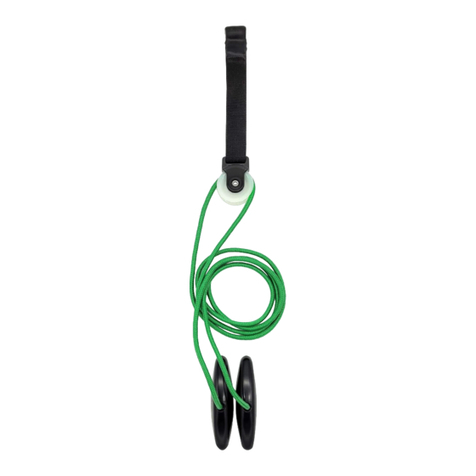
SPRI
SPRI Active Therapy Shoulder Pulley Setup, Workout Tips and Care & Safety Guide
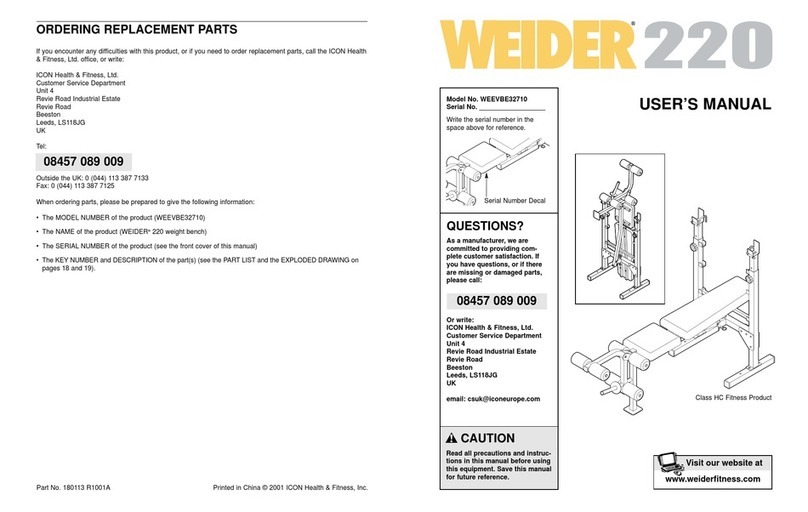
Weider
Weider 220 user manual

Fuel
Fuel FM-FLPLYO owner's manual
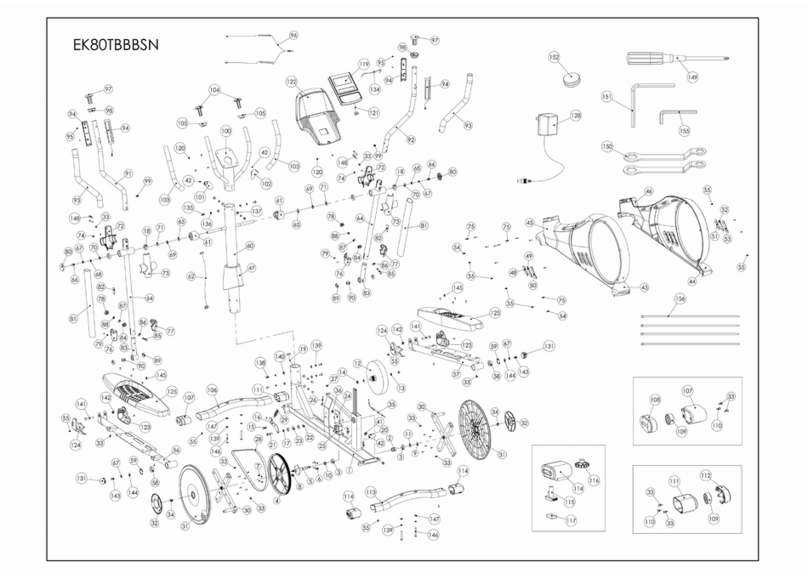
BH FITNESS
BH FITNESS EK80TBBBSN - PART LIST AND DIAGRAM parts manual
